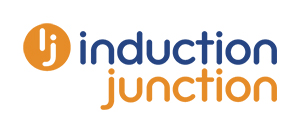As a Digital Learning Broker I am regularly asked to help source learning management systems (LMS). The number of learning platform providers grows each year. The term ‘LMS’ is now recognised and there’s a general understanding about the features and benefits. However, as new ways of ‘doing digital learning’ emerge this is a simple guide to different platform options available to HR and L&D professionals.
Learning Management System (LMS)

Learning Management Systems (LMS) are essentially a ‘place’ to home and manage e-learning content. They are useful for automating repetitive communication tasks around distributing course-ware and certifying completions. Learners can access course-ware, often through a branded portal. Learner progress is recorded and can be viewed by the LMS Administrator and a multitude of, usually exportable, reports can be provided.
Functionality is rarely limited to the LMS platform being merely an event access, management and reporting system. Increasingly there are modules that support wider engagement with managers through team views, skills profiling and other development methods such as 180o and 360o feedback facilities.
Another benefit is that courses created in-house can be accessed via the same system and some LMS allow for the recording of face to face development methods alongside e-learning.
The focus is on organisational access and efficiencies in learning information content, schedules and records.
Learning Transfer Platforms (LTP)

A Learning Transfer Platform (LTP) supports the learning process on a more individual basis by taking the learner through a series of tracked, custom-designed interactions driving learner engagement over an extended period. Thus creating a start to finish learning/performance journey. Along the way tasks are assigned and monitored and feedback is given. Managers are involved and there is usually a social element to the learning.
Not intended to replace an LMS, an LTP compliments by treating learning as a process and not an event itself. This leverages greater impact through the learner’s true engagement, use of follow up tools and on–the-job application of targeted behaviours.
Using an LTP encourages accountability, outlines clear goals from the start to address the learner’s social, individual advancement and job performance expectations.
The focus is on learners and delivering performance improvement outcomes.
Artificial Intelligence (AI) Platform

At Learning Technologies this year it was apparent that platforms using machine learning, otherwise referred to as Artificial Intelligence (AI), were on the rise.
Where AI powers the learning platform it can use its ability to analyse large amounts of data in real time and automatically suggest personalised learning content, at the right time and place, to meet a learner’s needs. Machine learning removes the need for learners to have to search for content or wait for content to be delivered to them. AI integrates learning into the work flow.
AI recognises context to suggest the most relevant content and even has the ability to manipulate Google search results to reflect benchmark data, industry trends, the learner’s experience and preferences. It can pull content from external and internal sources including other company systems and drives integrated with the platform.
Such platforms deliver insights pretty much instantly allowing the view of strengths and areas for improvement as well as information on search terms to help HR understand learning needs.
The focus is on learners, increasing productivity and return on investment insights as opposed to just reporting on what has been done.
Learning Recording Store (LRS)
A Learning Record Store (LRS) is a data store system containing the records of connected systems where learning activities are conducted.
An LRS can exist inside a traditional LMS or on its own. Rather than being an organisation tool like an LMS, the records in an LRS can follow a learner. A new starter could transfer their own data into your LMS or take it with them when they leave. For these reasons they are often used within education but not exclusively. Sometimes providers turn this transfer functionality off.
Very in-depth e-learning analytics can be created using an LRS within an LMS. However, depending upon how the LRS has been built it may not have its own built in reporting mechanism. In this case the LMS Administrator must provide means to access the data in the LRS, and in turn create a reporting system for the data.
The focus is on the storage and retrieval of e-learning records to a set of statements which include ‘actor, verb and object’ e.g ‘I did this’



